
The Battle of Bunker Hill was fought on June 17, 1775 during the Siege of Boston in the first stage of the American Revolutionary War. The battle is named after Bunker Hill in Charlestown, Massachusetts, which was peripherally involved. It was the original objective of both the colonial and British troops, though the majority of combat took place on the adjacent hill which became known as Breed's Hill.
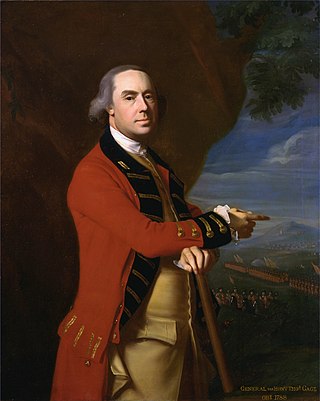
General Thomas Gage was a British Army general officer and colonial official best known for his many years of service in North America, including his role as British commander-in-chief in the early days of the American Revolution.

Guy Carleton, 1st Baron Dorchester, known between 1776 and 1786 as Sir Guy Carleton, was an Anglo-Irish soldier and administrator. He twice served as Governor of the Province of Quebec, from 1768 to 1778, concurrently serving as Governor General of British North America in that time, and again from 1785 to 1795. The title Baron Dorchester was created on 21 August 1786.

General James Abercrombie or Abercromby of Glassaugh, Banffshire was a British Army general and Whig politician who sat in the House of Commons from 1734 to 1754. He was commander-in-chief of forces in North America during the French and Indian War, best known for the disastrous British losses in the 1758 Battle of Carillon.

Joseph Warren, a Founding Father of the United States, was an American physician who was one of the most important figures in the Patriot movement in Boston during the early days of the American Revolution, eventually serving as President of the revolutionary Massachusetts Provincial Congress. Warren enlisted Paul Revere and William Dawes on April 18, 1775, to leave Boston and spread the alarm that the British garrison in Boston was setting out to raid the town of Concord and arrest rebel leaders John Hancock and Samuel Adams. Warren participated in the Battles of Lexington and Concord the following day, the opening engagements of the American Revolutionary War.
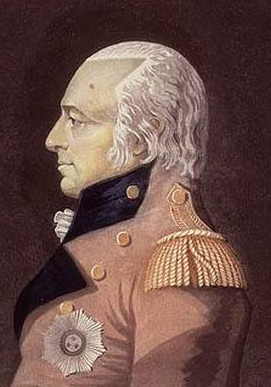
General Sir James Henry Craig KB was a British military officer and colonial administrator.
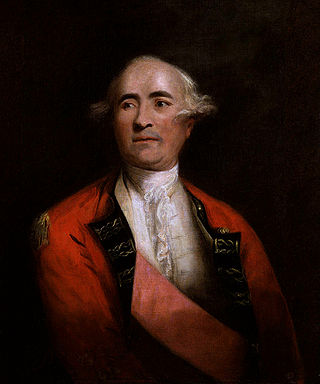
Sir Frederick Haldimand, KB was a Swiss military officer best known for his service in the British Army in North America during the Seven Years' War and the American Revolutionary War. From 1778 to 1786, he served as Governor of the Province of Quebec, during which time he oversaw military operations against the northern frontiers in the war, and engaged in ultimately fruitless negotiations to establish the independent Vermont Republic as a new British province. His administration of Quebec was at times harsh, with the detention of numerous political dissidents and agitators.
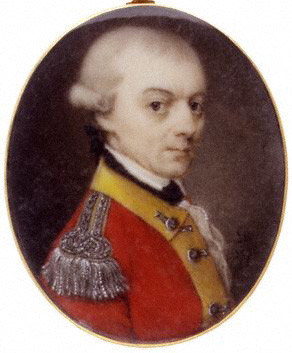
General Robert Prescott was a British military officer and colonial administrator. During a military career which spanned over fifty years, he participated in the Seven Years' War, the French and Indian War, and the American Revolutionary War, including key engagements such as the Montreal Campaign. He later became the Governor of Martinique and then, in 1796, Governor General of the Canadas, and the British Army's Commander-in-Chief for North America. He was recalled to England in 1799 after conflict with the Catholic Church and disputes with Anglo-Canadian colonial elites over the distribution of land in the colonies. He continued to hold his position until 1807, with his lieutenant governors acting in his absence. He died in 1815 after unsuccessful attempts to clear his name.
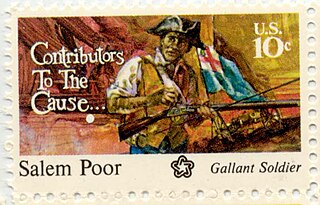
Salem Poor (1747–1802) was an enslaved African-American man who purchased his freedom in 1769, became a soldier in 1775, and rose to fame as a war hero during the American Revolutionary War, particularly in the Battle of Bunker Hill.

Sir Robert Pigot, 2nd Baronet was a British Army officer during the American Revolutionary War.

John Joseph Abercrombie was a career United States Army officer who served in numerous wars, finally reaching the rank of brigadier general during the American Civil War.

Arent Schuyler DePeyster was an American-born military officer best known for his term as commandant of the British controlled Fort Michilimackinac and Fort Detroit during the American Revolution. Following the capture of Lieutenant-Governor General Henry Hamilton, DePeyster is often credited as being the military leader of British and Indian forces in the Western American and Canadian frontiers.
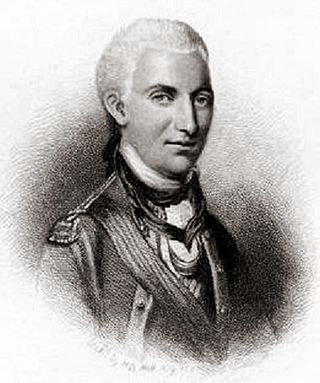
Hans Christian Febiger was an American Revolutionary War commander, confidant of General George Washington, and original member of the Society of the Cincinnati. Known by the moniker "Old Denmark", Febiger also served as treasurer of Pennsylvania from November 13, 1789, until his death.
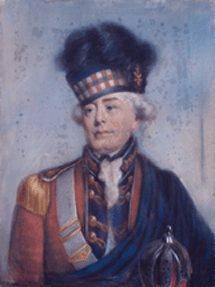
John Small was a career British military officer from Scotland who played a key role in raising and leading the 84th Regiment of Foot during the American Revolution. After the war, he settled with many of the men of the 84th Regiment in Douglas Township, Hants County, Nova Scotia. The British Crown granted land to soldiers after the war to encourage settlement, especially in Upper Canada.
William Haviland was an Irish-born general in the British Army. He is best known for his service in North America during the Seven Years' War.

The Death of General Warren at the Battle of Bunker's Hill, June 17, 1775 refers to several oil paintings completed in the late 18th and early 19th century by the American artist John Trumbull depicting the death of Founding Father Joseph Warren at the June 17, 1775, Battle of Bunker Hill, during the American Revolutionary War. Warren, an influential Massachusetts physician and politician, had been commissioned as a general but served in the battle as a private. He was killed during or shortly after the storming of the redoubt atop Breed's Hill by a British officer.
Lieutenant-General Sir James Frederick Lyon was a distinguished officer of the British Army who served as Governor of Barbados from 1829 to 1833.
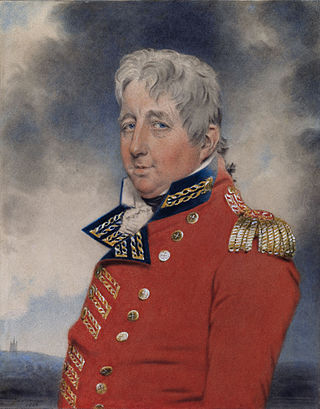
Lieutenant-General Richard G. England of Lifford, County Clare was a British Army officer who became Lieutenant-Governor of Plymouth.

Samuel Blachley Webb (1753–1807) was the commanding officer of the 9th Connecticut Regiment in the American Revolutionary War.

















